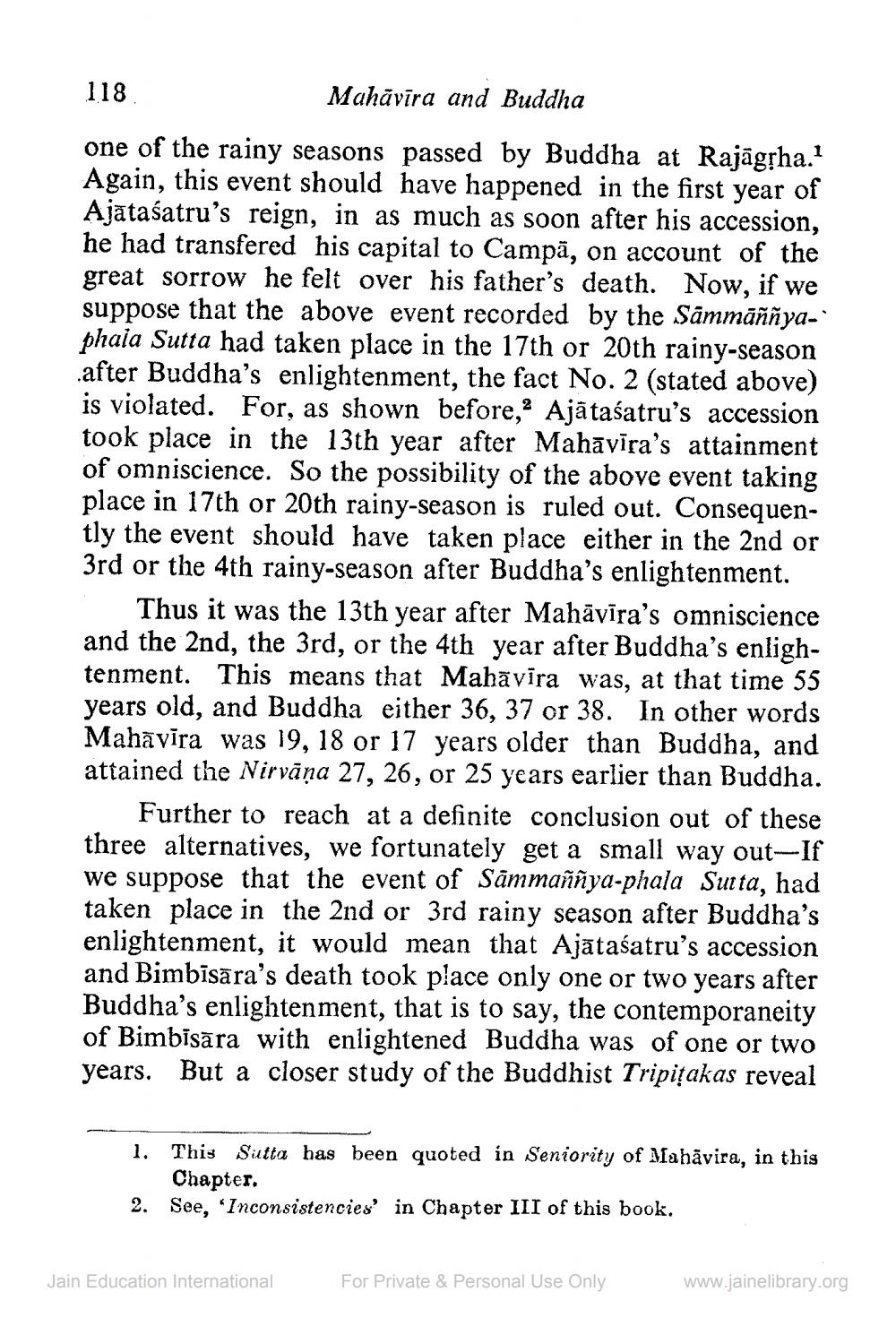________________
118
Mahāvīra and Buddha
one of the rainy seasons passed by Buddha at Rajāgṛha.1 Again, this event should have happened in the first year of Ajataśatru's reign, in as much as soon after his accession, he had transfered his capital to Campã, on account of the great sorrow he felt over his father's death. Now, if we suppose that the above event recorded by the Sammāññуa-` phaia Sutta had taken place in the 17th or 20th rainy-season after Buddha's enlightenment, the fact No. 2 (stated above) is violated. For, as shown before,2 Ajataśatru's accession took place in the 13th year after Mahavira's attainment of omniscience. So the possibility of the above event taking place in 17th or 20th rainy-season is ruled out. Consequently the event should have taken place either in the 2nd or 3rd or the 4th rainy-season after Buddha's enlightenment.
Thus it was the 13th year after Mahāvīra's omniscience and the 2nd, the 3rd, or the 4th year after Buddha's enlightenment. This means that Mahavira was, at that time 55 years old, and Buddha either 36, 37 or 38. In other words Mahavira was 19, 18 or 17 years older than Buddha, and attained the Nirvāņa 27, 26, or 25 years earlier than Buddha.
Further to reach at a definite conclusion out of these three alternatives, we fortunately get a small way out-If we suppose that the event of Sämmaññya-phala Sutta, had taken place in the 2nd or 3rd rainy season after Buddha's enlightenment, it would mean that Ajatasatru's accession and Bimbisara's death took place only one or two years after Buddha's enlightenment, that is to say, the contemporaneity of Bimbisara with enlightened Buddha was of one or two years. But a closer study of the Buddhist Tripitakas reveal
1. This Sutta has been quoted in Seniority of Mahavira, in this Chapter.
2. See, 'Inconsistencies' in Chapter III of this book.
Jain Education International
For Private & Personal Use Only
www.jainelibrary.org




